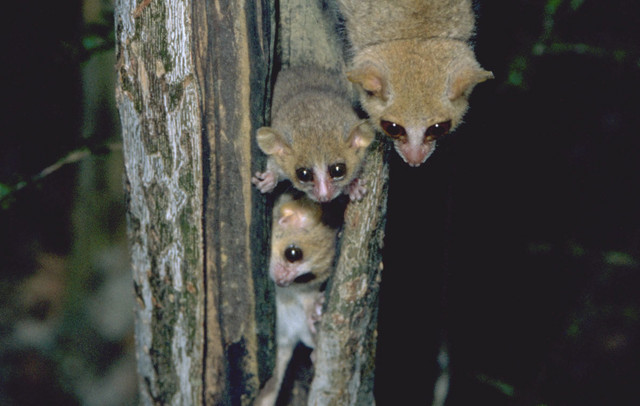Gray mouse lemur: lack of food leads to torpor
In the middle of the European summer it is hard to imagine: monkeys that hibernate in tropical regions? It sounds unlikely, but this is how the Malagasy Gray mouse lemurs (Microcebus murinus) survive the drought period between June and September. In the natural habitat of the Gray mouse lemur the minimum temperature can stagnate between 5 and 10 degrees, at the same time food becomes scarce for the animals in Madagascar. Gray mouse lemurs feed on fruit and insects. The nocturnal animals increase their survival chances when they either take a short form of hibernation known as torpor or an extended hibernation. The mouse lemurs decrease their metabolism and with this reduce the heart rate and body temperature. In this state they use less energy, which is difficult to obtain in the form of food during the dry season.
But what triggers the beginning of the torpor or the hibernation period? A research team of the National Museum of Natural History in France and the Behavioral Ecology and Sociobiology Unit from the German Primate Center has studied Gray mouse lemurs in Madagascar to answer that question. Pauline Vuarin, Melanie Dammhahn, Peter Kappeler und Pierre-Yves Henry had two hypotheses: it is triggered by the change of seasons, so just the fact that less rain falls and it gets colder. Or the hibernation period in fact starts when less food is available.
To find out, the researchers have experimentally separated two conditions that commonly occur simultaneously for the lemurs: season and the availability of food. The researchers compared two groups of about 20 animals each in their habitat in western Madagascar. For both groups, the days became shorter and the rain less but the scientists supplied one of the groups with significantly more food. The result was clear: the group of Gray mouse lemurs that were fed, began one to two months later with their brief winter sleep, they spent only a quarter of the time of the control group in torpor and their minimal body temperature was six degrees Celsius higher than the control animals'. The authors interpreted this as a clear indication that the availability of food can be the decisive factor in the beginning of the torpor in many heterothermic animal species. This way the animals can flexibly and optimally adapt to climatic fluctuations. These results, the authors write, are a necessary condition to investigate how the same heterothermic animals like the lemurs can withstand for example climate change.
Original Publication
Vuarin P, Dammhahn M, Kappeler PM, Henry PY: When to initiate torpor use? Food availability times the transition to winter phenotype in a tropical heterotherm. Oecologia 2015, May 8 (Epub ahead of print). DOI: 10.1007/s00442-015-3328-0


